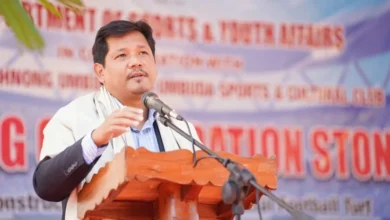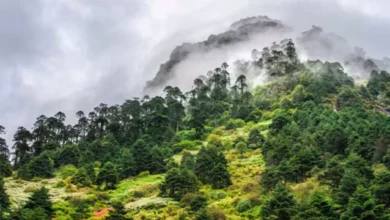BOLLING: Chief Minister Pema Khandu on Thursday appealed to the people of the Siang region to permit a survey to prepare the preliminary feasibility report (PFR) for the proposed 12,500 MW Siang Upper Multipurpose Project (SUMP).
Interacting at an election victory celebration program of Rural Development & Panchayati Raj Minister Ojing Tasing, Khandu said there was a thorough investigation to be done before the project was taken further.
“It is only after survey and investigation that we will know where the dam will come up, its height, and the area to be submerged,” Khandu explained. He added that completing the PFR, obtaining techno-economic and environmental clearances, and conducting public hearings would take years. Acknowledging public concerns, Khandu assured, “I still stand with the public. If people do not want dams, we won’t go ahead.”
Highlighting geopolitical concerns, Khandu said that China is constructing a 60,000 MW dam on the Yarlung Tsangpo River in Tibet, which flows into India as the Siang River. He said that China’s project may drastically reduce water flow in the Siang during winter and pose risks of sudden water releases, which might cause devastating floods.
The SUMP is to regulate water flows, reduce flood risks, and ensure the security of availability of water,” said Khandu. “It is not just hydropower; it’s a future for the Adi community, Assam and even Bangladesh.”.
Khandu asked the Adi Bane Kebang and local intellectuals to discuss and research the whole project and its implications. He condemned anti-dam activists, raising questions about their intentions and relations to the region. “Trust your people, take part in discussions, and find a solution,” he appealed. Protests have erupted in Siang and Upper Siang districts, with locals opposing the deployment of armed forces for survey operations.
Deputy Chief Minister Chowna Mein reassured residents that security forces were deployed to protect survey personnel and equipment, not to intimidate locals. Addressing public concerns, Mein emphasized the project’s strategic and developmental significance.
The Siang dam is not just a project but an opportunity to secure one’s future, generate income, and bring prosperity in Arunachal”, Mein said, listing more benefits such as irrigation and flood control.
He clarified discrepancies in the project’s capacity, saying that the dam would produce 11,000 MW, not 12,500 MW as reported. He also emphasized the role of the dam in countering risks from China’s upstream projects.
The National Hydroelectric Power Corporation (NHPC) has shortlisted three possible dam sites in Upper Siang and Siang districts. Surveys are on to assess these locations.
Both Khandu and Mein appealed to the communities to think above the project and engage in constructive dialogue, saying SUMP is a step toward Arunachal’s progress and security.





